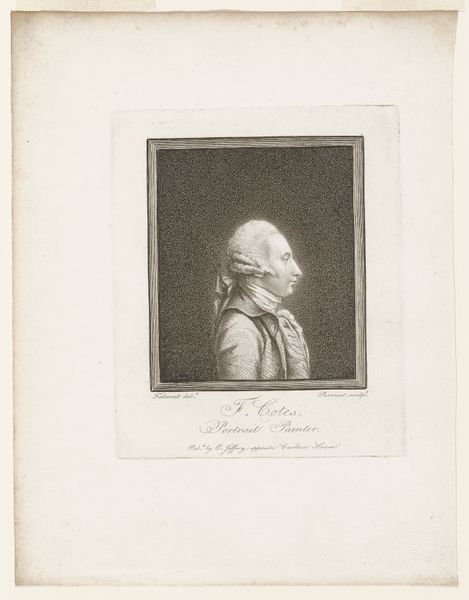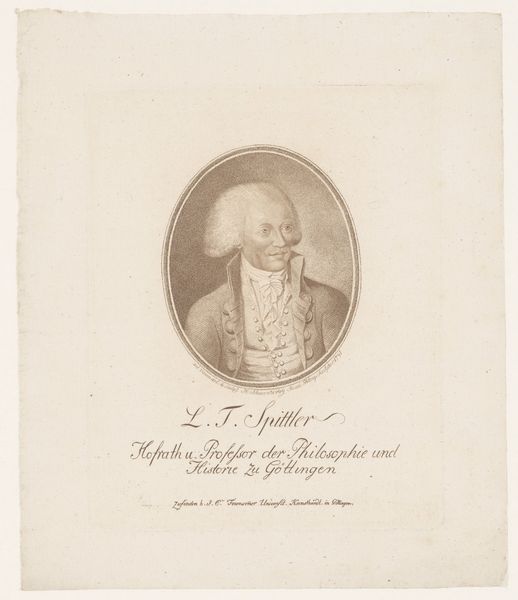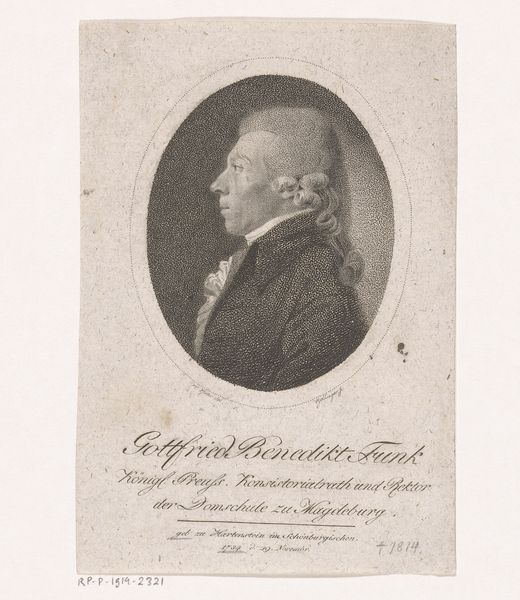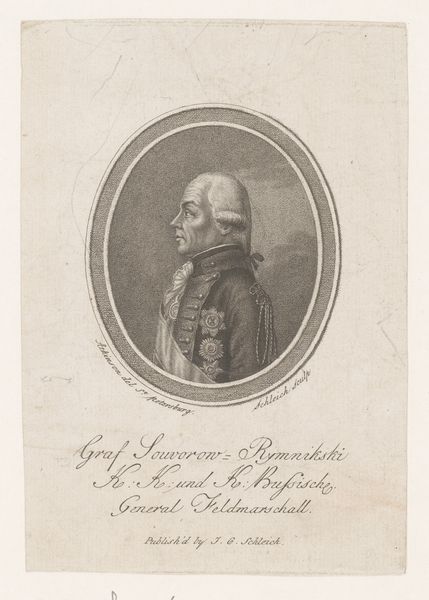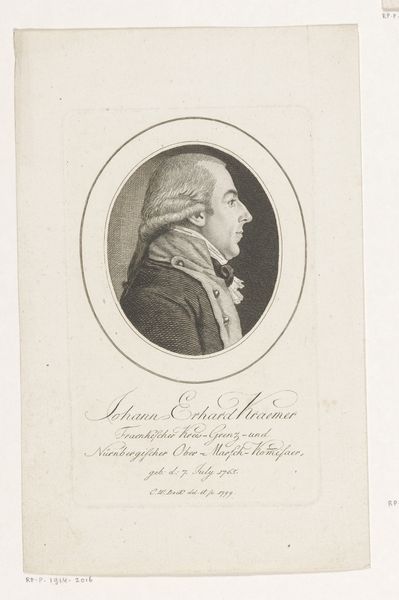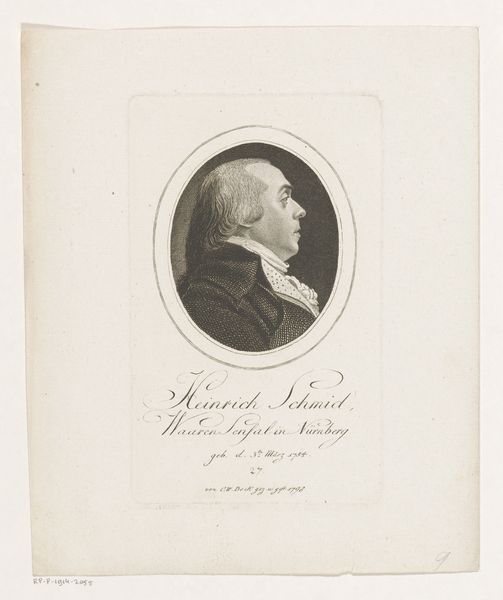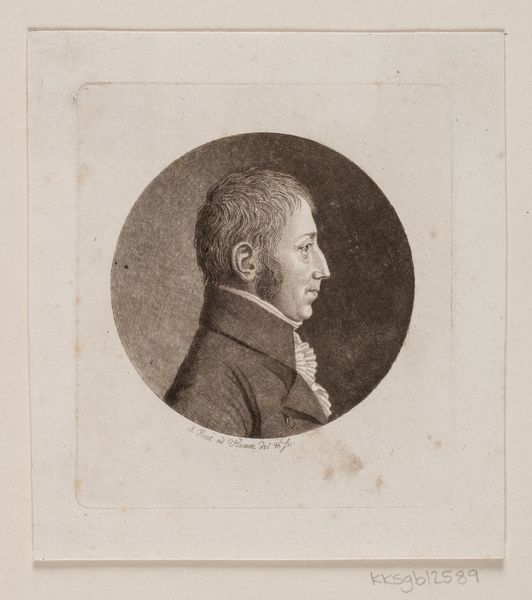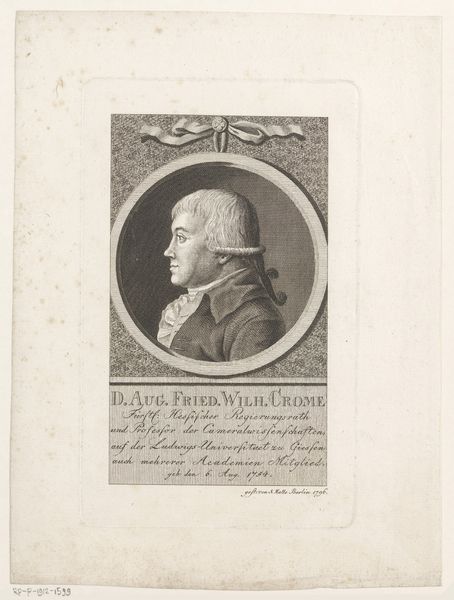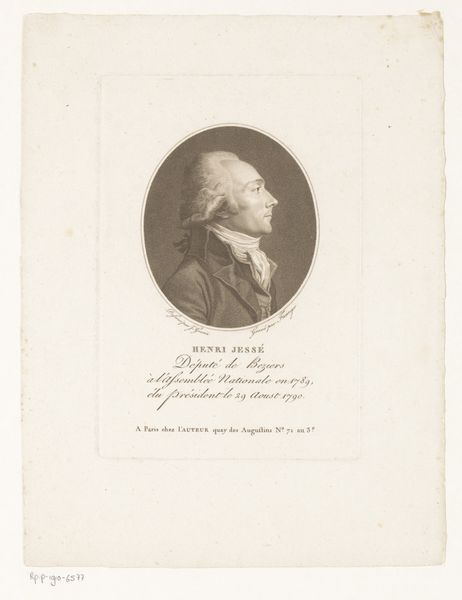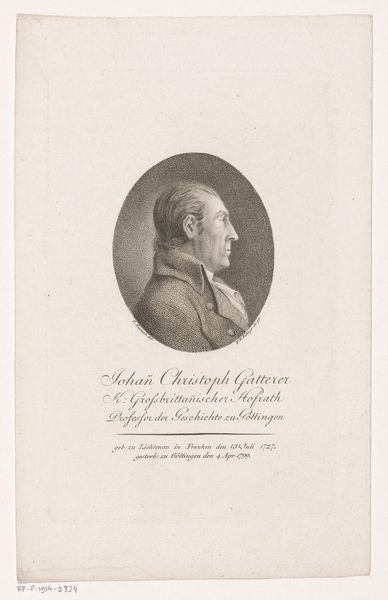
paper, engraving
#
portrait
#
neoclacissism
#
paper
#
engraving
Dimensions: height 218 mm, width 135 mm
Copyright: Rijks Museum: Open Domain
This print of Adam Leonard Kaldenbach was made by Ludwig Gottlieb Portman sometime between the late 1700s and early 1800s. It’s rendered in a now-uncommon technique called stipple engraving. Look closely, and you’ll see that the image isn't made of lines, but tiny dots, pitted into the copper plate with a special tool called a roulettte. It’s a laborious method, requiring great skill. The more dots per square inch, the darker the tone. Because of this, the medium was seen as particularly well-suited to rendering flesh. This print would have been made by a highly skilled artisan, working to produce a portrait of a member of the middle class. It's a fascinating example of how the graphic arts could both record a likeness, and elevate the status of the sitter. Considering this, we can see how so-called 'minor' arts are in fact integral to understanding social values and artistic expression.
Comments
No comments
Be the first to comment and join the conversation on the ultimate creative platform.

